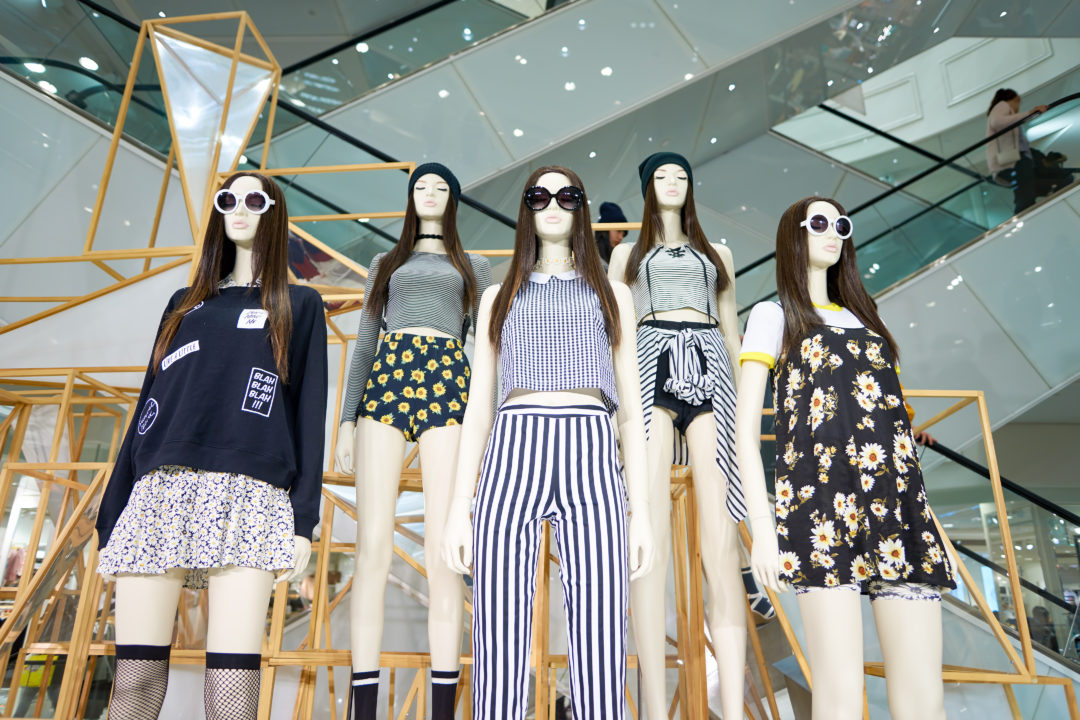Our closets tend to be filled with mass-produced, fast fashion items that we reach for on any occasion. Having moved away from the 4-seasons-a-year fashion cycle to churn out up to 20 collections a year, high street brands such as relentlessly feed our appetite for newness. And the temptation is arguably hard to resist. But these clothes often come at a much higher cost than what you’ll see on the price tag.
Fast fashion is responsible for vast amounts of waste, major pollution - ranked second largest polluter after the oil industry! - and heavily relies on cheap labor. As consumer awareness is growing on the issues of climate change and social responsibility, the “slow fashion” movement emerged as a response and brands committed to ethical and sustainable fashion are gaining momentum. We’re proud to be at the forefront of this increasingly conscious movement and hope you’ll join us once you realize how fast fashion is hurting us all.
FAST FASHION IS LIKE FAST FOOD: CHEAP AND UNHEALTHY
Let’s start with the basics and explain what we’re talking about. Coined in the 2000s, the term “fast fashion” refers to fashion that is produced very quickly in order to get new trends to the market as quickly and cheaply as possible. Life fast food chains, fast fashion brands are often found in malls and high traffic locations and their business model is entirely built around the ability to deliver high volumes of products in as little time as possible. It can take as little as a week from a specific style to be designed and hit stores. Something “[un]heard of before” according to Clara Vuletich, a TEDx speaker, designer, researcher and creator of a sustainable design methodology used by brands such as Gucci. These brands often replicate the latest runway trends at low prices, encouraging a constant cycle of buying and discarding clothes as the trends dictate.

FAST FASHION DESTROYS THE ENVIRONMENT
Fast fashion is a major culprit in the current climate change crisis. Producing clothing that is not designed to last and often deteriorates in less than a year, fast fashion has a massive impact on the environment, with vast amounts of clothing ending up in landfills. According to a recent report by Environmental Protection Agency, 84% of unwanted clothes in the US either went into a landfill or an incinerator.
In fact, the negative environmental impact of fast fashion starts with the heavy use of pesticides to grow crops used for textile production, toxic chemicals and dyes. Blue River, a film about the water pollution caused by the textile industry, highlights the most visible symptoms of this problem by showing rivers and waterways in China and India turning into unnatural colors as a result. Think denim blue rivers, white lakes and red waterfalls, reflecting the trending color of the next fashion season. According to Forbes, the apparel industry is also responsible for 10% of all carbon emissions globally, making it the second worst polluting industry after oil. In addition, much of the fabrics used in fast fashion are not biodegradable; many like polyester and polyamide take over a lifetime to break down, further filling up landfills the world over.
FAST FASHION EXPLOITS WORKERS
The cost of fast fashion extends beyond its impact on the environment. It negatively impacts human life too. A year after the catastrophic fire in Dhaka in 2012, the Savar building collapsed in Bangladesh, killing over 1,200 workers and leaving many more injured - the deadliest garment-related accident in history. This tragic event has played a significant role in bringing attention to the poor working conditions, lack of safety and exploitation of workers in the global garment industry, many of whom are children.
That said, with a growing awareness of climate change and of our role as consumers, sustainability is becoming a must in the industry and even fast fashion retailers are increasingly working to decrease their environmental footprint. But while we’re definitely seeing some progress from these big players, sustainable pieces are said to make up only a tiny fraction of the leading fast fashion brands' assortments. While every step in the right direction counts, the overwhelming majority of clothing sold by these high street retailers is still hugely problematic from a social and environmental standpoint. So until we see real change from them - if that ever happens - the best way to stop contributing to the problem is to stay adopt a more responsible, “slow fashion” approach, where we recognize the value of craftsmanship and high quality, where we understand that beautiful, durable clothes simply take time to make. As Dame Vivienne Westwood put it, "Buy less, choose well, make it last".
Now, are you ready to kick your fast fashion addiction? Tell us what you think in the comments section.
MORE STORIES
-
What You Should Know About Sustainable Fashion
-
MEET: Mengly Hernandez of LINEA Germania
-
Vyayama: Yogic Values, Style & Performance
-
5 Films That Will Inspire You to Be More Conscious
-
FAUBOURG Voices: Yomi Abiola
-
MEET: Painter Cassi Namoda
-
5 Women of Color Changing the Way We See the World
-
Before You Buy: Ask Yourself These 4 Questions To Avoid Fashion Waste
-
4 Ways to Wear Wool Beyond the Sweater
-
Travel: How I Made My Tulum Experience Authentic

